This is a continuation of a series of posts on the Fuji GFX 50S. You should be able to find all the posts about that camera in the Category List on the right sidebar, below the Articles widget. There’s a drop-down menu there that you can use to get to all the posts in this series; just look for “GFX 50S”. This is the third post in a series on the Fuji 250 mm f/4 lens for the GFX.
Today I measured the focus shift of the Fuji 250 mm f/4 on the GFX 50S at 5 meters. Here’s a big-picture look at the test setup:
And here’s a look at the target:
I’m using a checkerboard ramp at a predetermined angle and feeding the images to some Matlab code that I’ve written to measure the shift in focus as the lens is stopped down. I take 16 images at each f-stop from f/4 to f/11 in 1/3 stop intervals and average the distance within each f-stop in the complete series.
Here is the luminance focus shift that I measured at the sensor plane, in micrometers (um).
The thick lines are the average shifts, and thin ones mark the values one standard deviation away from the average. The shift in the object field (in front of the tens) is towards the camera as the lens is stopped down.
Converting that to the size of the circle of confusion (CoC) that would be implied by that amount of focus error:
Since the pixel pitch of the GFX is 5.3 um, this amount of focus shift is nothing to worry about.
Now we’ll look at the individual JPEG Adobe RGB color planes:
You can see that there is some minor longitudinal chromatic aberration (LoCA), which causes the focus distance of the three color planes to be different. The dots are the sample points.
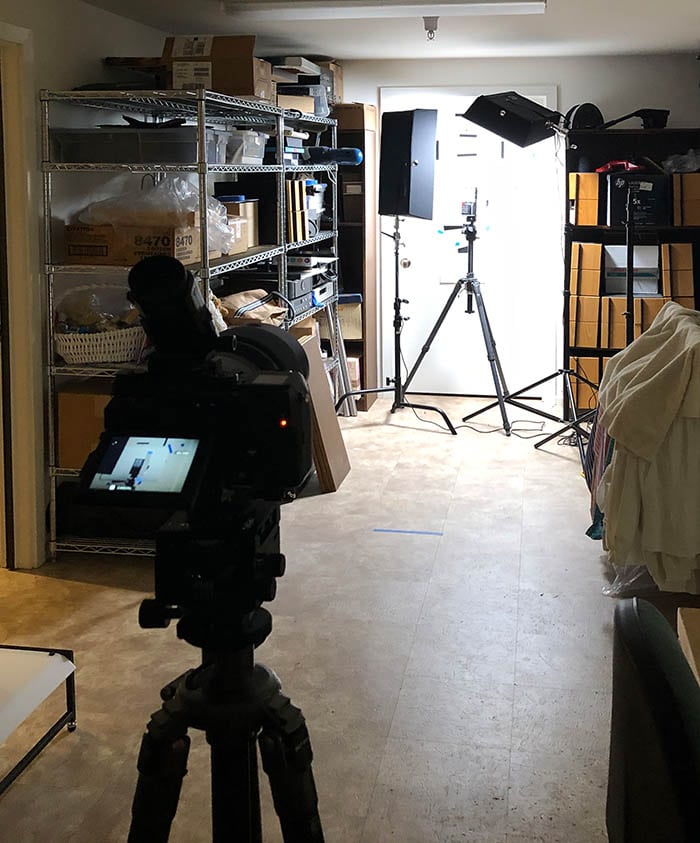
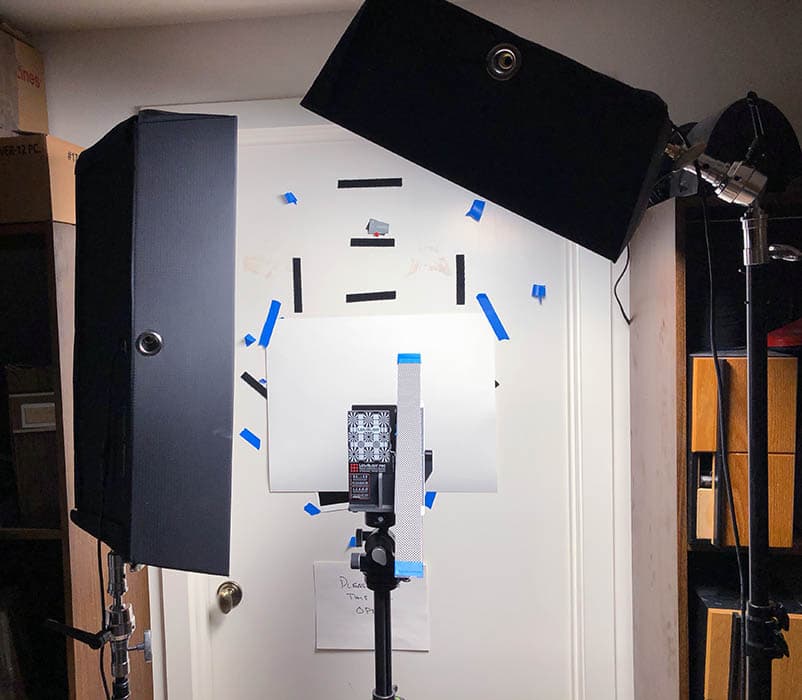
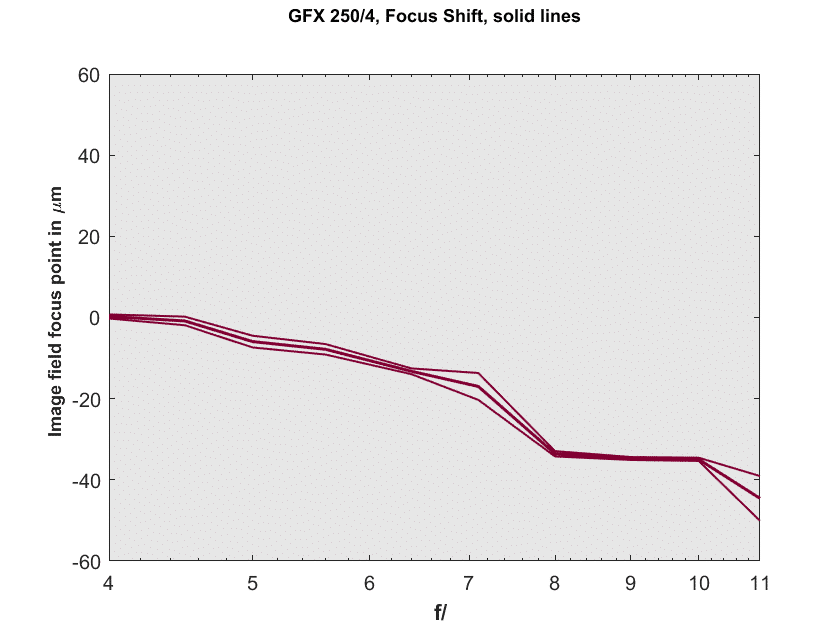
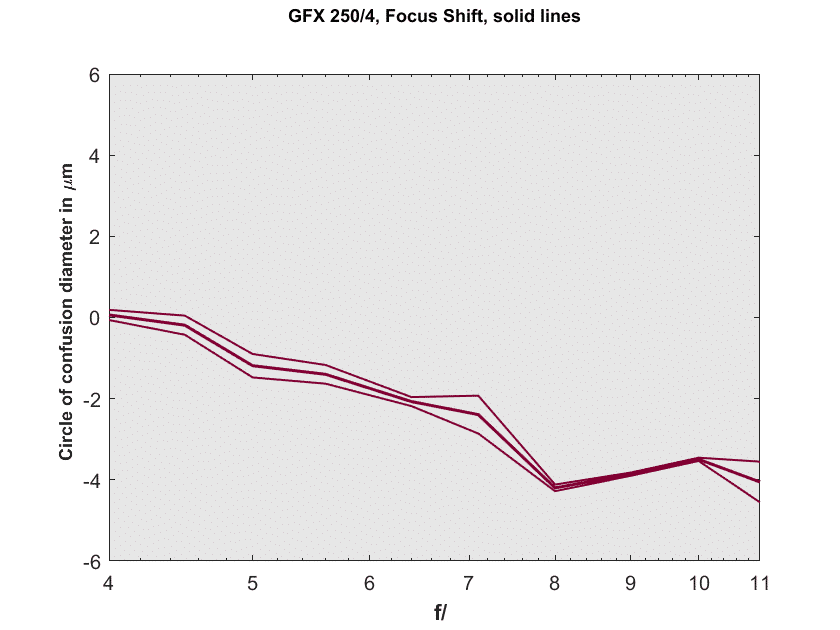
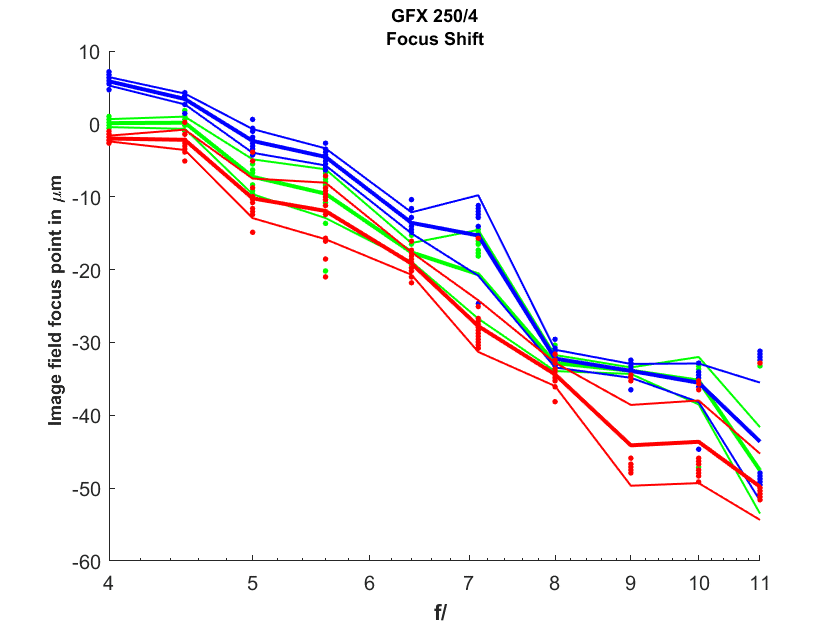
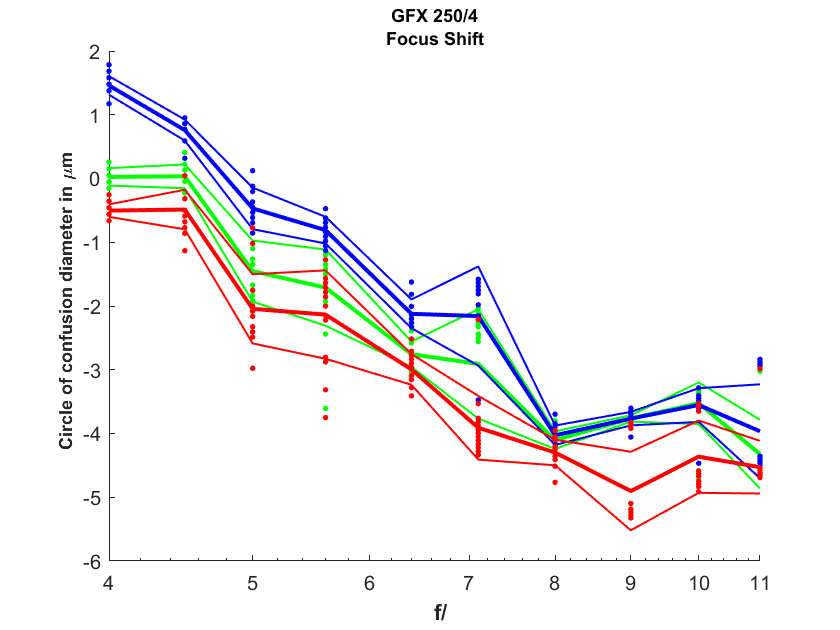
[…] this post, I looked at the focus shift of the FujiFilm 250 mm f/4 G-mount lens and found it […]